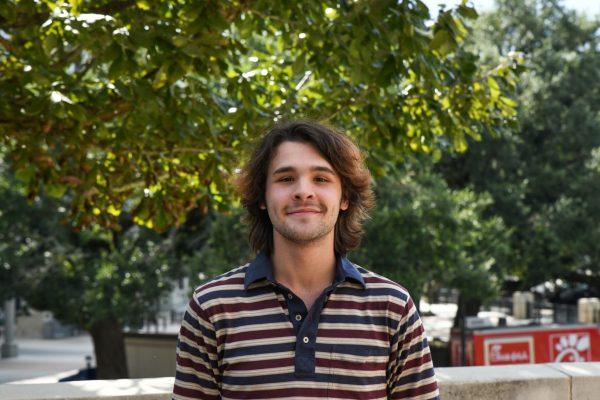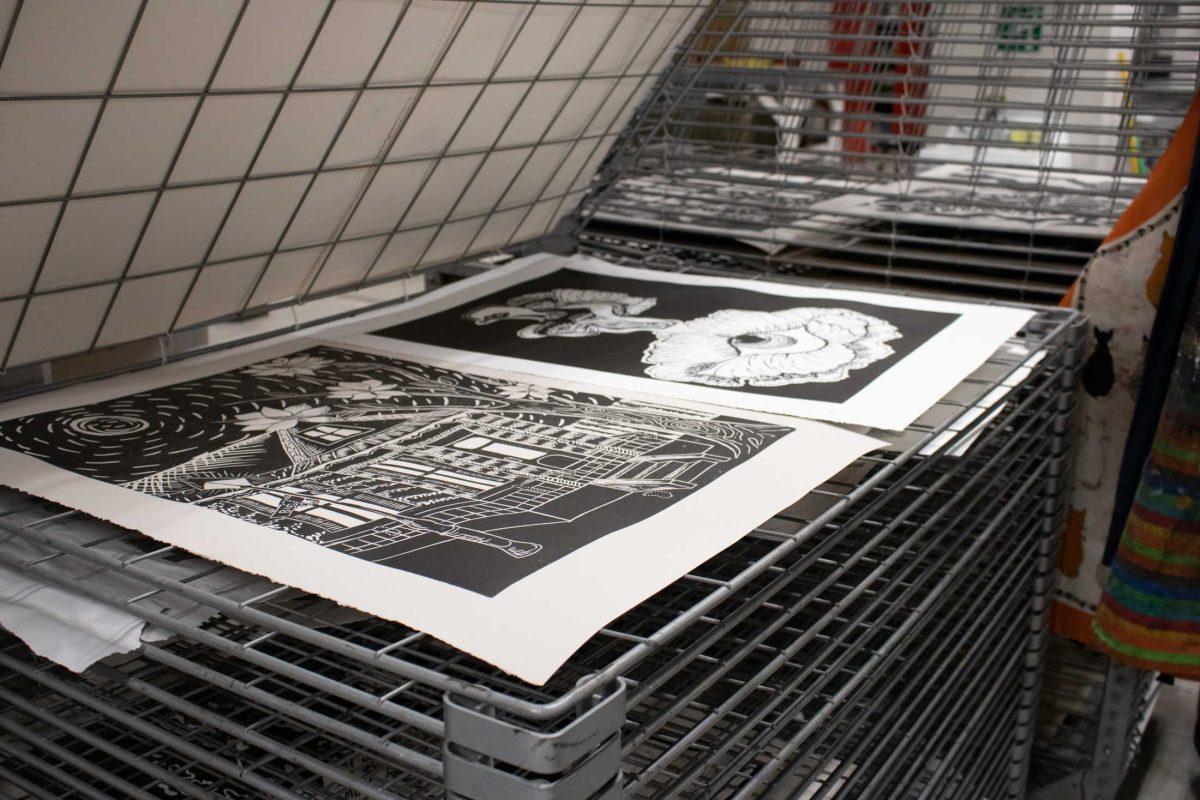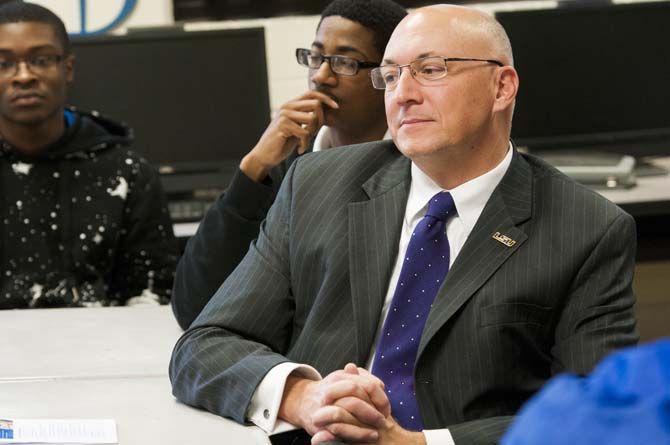The LSU Printmaking Guild concluded a months-long, national print exchange on the last weekend of the spring semester.
The guild is LSU’s official student organization for printmaking, providing both a community and an important artistic resource for its 40 members. Building a sense of community is currently the guild’s biggest focus.
Printmaking guild president and second year printmaking graduate student Cameron Savage said a print exchange seemed like the clearest way to do it.
“We really want to build morale back up and get students interested and make sure the club is being active in whatever ways possible, so an exchange was a pretty simple way we could do that,” Savage said.
He said exchanges are commonplace in the printmaking world because the focus of the medium itself is to reproduce work. Printmakers make several copies or an “edition” of a print, which often leaves them with a surplus of work.
Savage thinks trading prints is essentially just the next step in the process.
“It allows the pieces to not feel so ‘sacred’ or ‘priceless’ in a way,” he said. “It’s not like you’ve created this one painting, and this painting is one of one. For print we can create large editions and trade them even just amongst friends in the print shop.”
Savage said invitations to participate in the exchange were sent via Google survey to 40-50 universities across the U.S. and a handful in Canada starting in late August. Participants would pay a $15 entry fee, then send in 15 of their own prints and receive 13 random ones pulled from the pool of submissions.
Savage said submissions began showing up in mid-April and didn’t stop until mid-May.
The exchange ended up with around 40 participants total, leaving the Guild’s four officers and handful of member volunteers with around 600 prints to sort through and redistribute, he said.
“It took days,” he said. “It was a madhouse.”
The prints that didn’t get sent back out won’t be wasted.
To continue the club’s current commitment to maximum involvement with the community, Savage said many of the prints sent in and used in the exchange will also be featured in an LSU exhibition during the 2023 fall semester. He thinks an exhibition would generate awareness of the guild and drum up excitement for the next exchange.
Savage encouraged anyone interested to get involved and follow the group’s Instagram account for information on future events.
The printmaking guild is open to anyone who’s taken LSU’s introductory printmaking courses and even to students who haven’t but have some experience with the practice.
“If you make prints in a traditional sense, exchanges are always an easy way to be pulled into the community,” said Savage.
The LSU Printmaking Guild develops community for creators, completes national print exchange
May 29, 2023
Student relief prints dry Friday, Feb. 3, 2023, on a drying rack in the printmaking room inside William B. Hatcher Hall in Baton Rouge, La.
More to Discover
About the Contributor

Colin Falcon, Editor in Chief
Why did you join the Reveille?
I’d always wanted to be involved with the paper for mostly journalistic passion-related reasons, but I never worked up the nerve to apply. Then a good friend of mine got promoted and really wanted me to take his old job, so I did. It was honestly a great call, as it’s been a great outlet to channel the love for the printed word that I hold in my heart.
What positions have you held at the Reveille?
I started out in digital as an optimizer. Then I was a news reporter for a summer and opinion editor for a year. Now I’m happy to serve as editor in chief.
What’s your favorite thing about working at the Reveille? The people! Throughout all the positions I’ve held, my favorite part has consistently been the other writers and editors. Just a good group of folks I wouldn’t have met if I hadn’t started here. What’s your favorite story that you’ve worked on so far? My bird story! I did a piece about LSU’s Natural Science Museum and its massive collection of bird specimens (over 230,000 bird skins, skeletons and stomach-content samples). I also did a series of articles about cancelled bus routes that I’m immensly proud of. What do you hope to do after graduation? I hope to continue reporting. Where can you be found on social media? My Instagram is @collln_falcon and my Twitter is @nestingnests.






